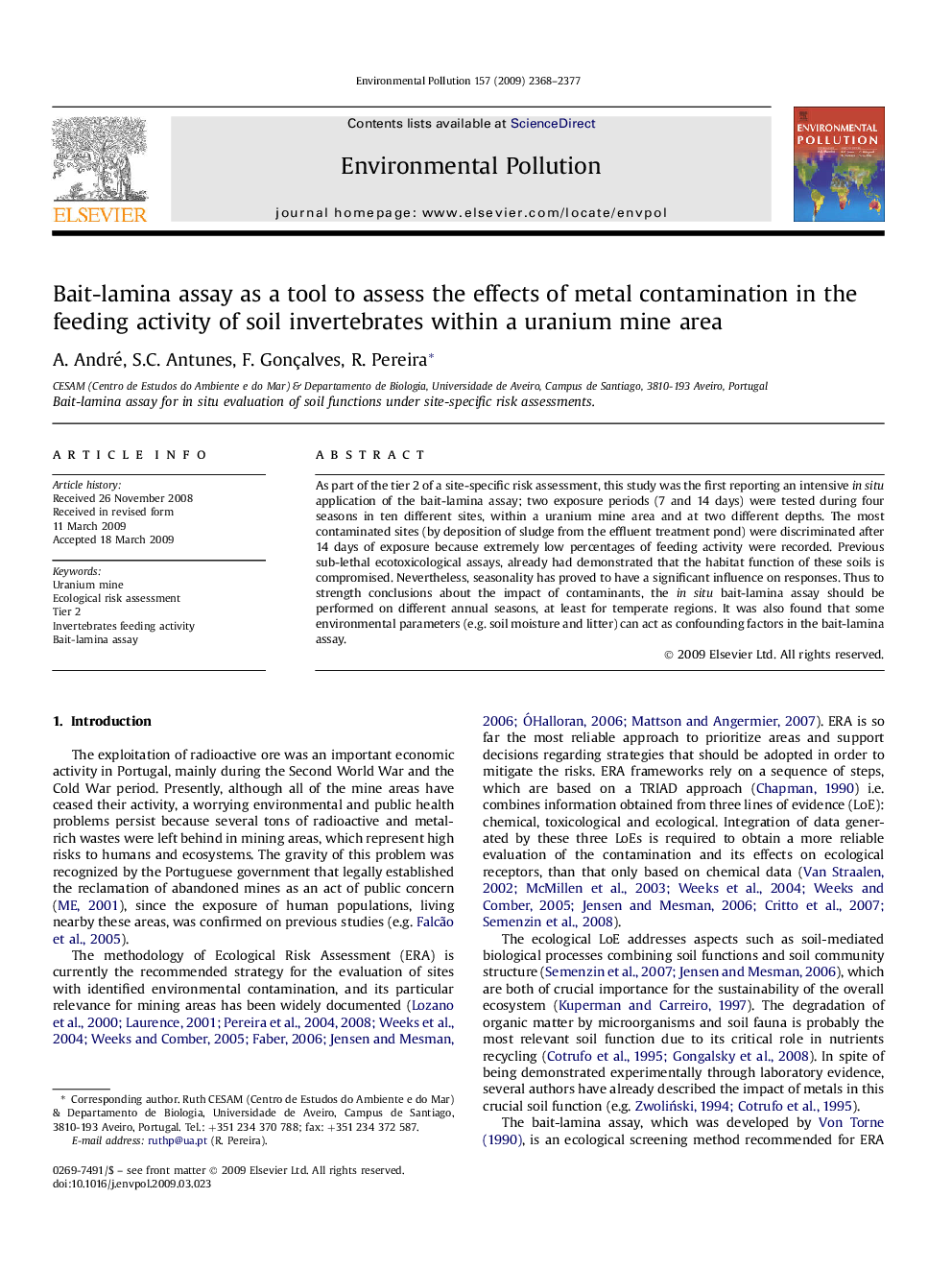| Article ID | Journal | Published Year | Pages | File Type |
|---|---|---|---|---|
| 4425870 | Environmental Pollution | 2009 | 10 Pages |
As part of the tier 2 of a site-specific risk assessment, this study was the first reporting an intensive in situ application of the bait-lamina assay; two exposure periods (7 and 14 days) were tested during four seasons in ten different sites, within a uranium mine area and at two different depths. The most contaminated sites (by deposition of sludge from the effluent treatment pond) were discriminated after 14 days of exposure because extremely low percentages of feeding activity were recorded. Previous sub-lethal ecotoxicological assays, already had demonstrated that the habitat function of these soils is compromised. Nevertheless, seasonality has proved to have a significant influence on responses. Thus to strength conclusions about the impact of contaminants, the in situ bait-lamina assay should be performed on different annual seasons, at least for temperate regions. It was also found that some environmental parameters (e.g. soil moisture and litter) can act as confounding factors in the bait-lamina assay.
